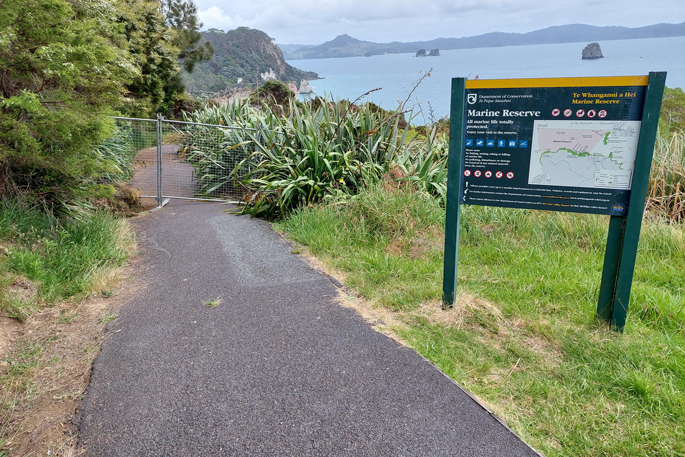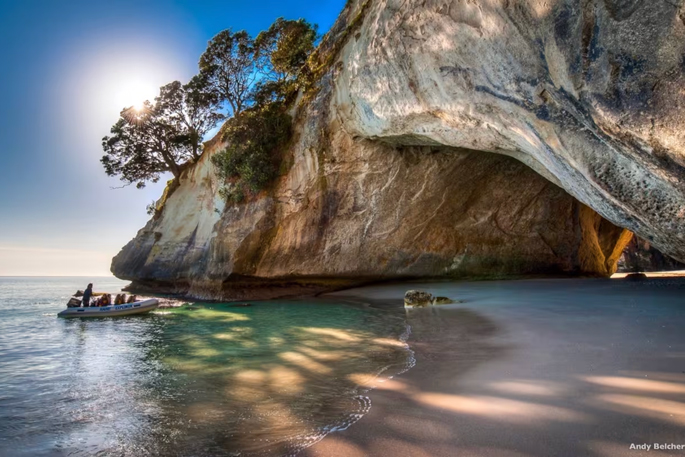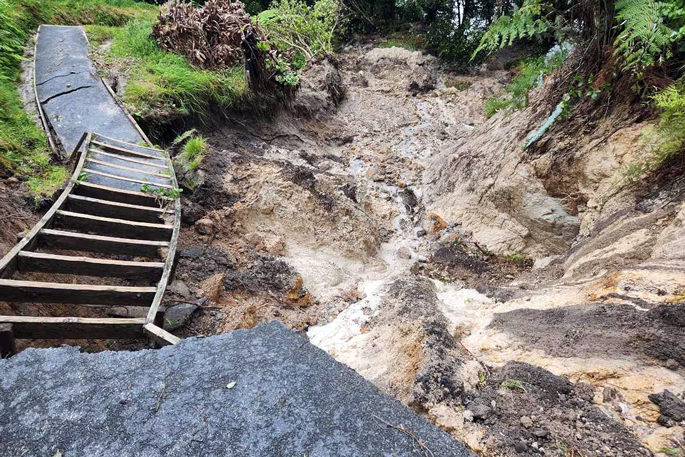Removal of dangerous trees and self-sewn wilding pines marks the start of physical work to reinstate temporary walking access to Mautohe Cathedral Cove’s iconic beach.
The track to the popular beach has been closed to the public since February 2023, when it was extensively damaged by extreme weather events including Cyclone Gabrielle.
DOC considered the track unsafe for the typical visitor to the location.
DOC has two Mautohe Cathedral Cove work programmes underway, funded through the International Visitor Levy.
One programme will reinstate temporary walking access to the cove for this summer, and the other workstream will determine a long-term visitor access and visitor management at the site.
DOC’s Hauraki-Waikato-Taranaki Regional Director Tinaka Mearns says arborists will be on site next week to commence an estimated three weeks of work to remove more than 30 trees of different species, including she-oak, pinaster and wilding pines.
 Mautohe Cathedral Cove track closure. File Photo.
Mautohe Cathedral Cove track closure. File Photo.
“Removing these trees and assorted other pest plants supports weed management and biodiversity restoration goals we have for Mautohe Cathedral Cove.
“This type of work makes the area an active work site with obvious hazards – so we’re continuing to urge the public to please stay out of the reserve while contractors are operating. Please follow our clear advice and do not use the track.”
“Entering the closed track while the tree felling operation is underway could result in serious injury and may lead to delays in the work programme.”
Accessing Mautohe Cathedral Cove remains a marine-only experience until December.
Meanwhile, mobilising people to protect Mautohe Cathedral Cove into the future, and determine how its mauri (life essence) can be restored are key facets of visitor management planning work for the iconic site, says Cathedral Cove Project Lead Tania Short.
“And as a coastal location, Mautohe Cathedral Cove faces greater rockfall and landslide challenges than many other places.
“Mautohe Cathedral Cove is vital to the regional economy, and if we manage it and protect it, everyone will benefit,” she says. “But we must do that in a sustainable way.”
Ngāti Hei consider Mautohe Cathedral Cove as a significant site as it is the location of historic pa and fortification ditches.
 Mautohe Cathedral Cove. Photo: Andy Belcher.
Mautohe Cathedral Cove. Photo: Andy Belcher.
“This coastal landscape is prone to storm damage, landslides and rockfalls making it a challenging place to maintain access and support high visitor numbers.”
Tania says Ngāti Hei has a clear desire for manuhiri (visitors) to be safe when they go to Mautohe Cathedral Cove, and that will be a key aspect in development of a long-term walking access option.
Contributions from the community are vital to the visitor management workstream, Tania says.
“Our visitor management planning project will be a conversation we want everyone in the community to be part of.”



0 comments
Leave a Comment
You must be logged in to make a comment.